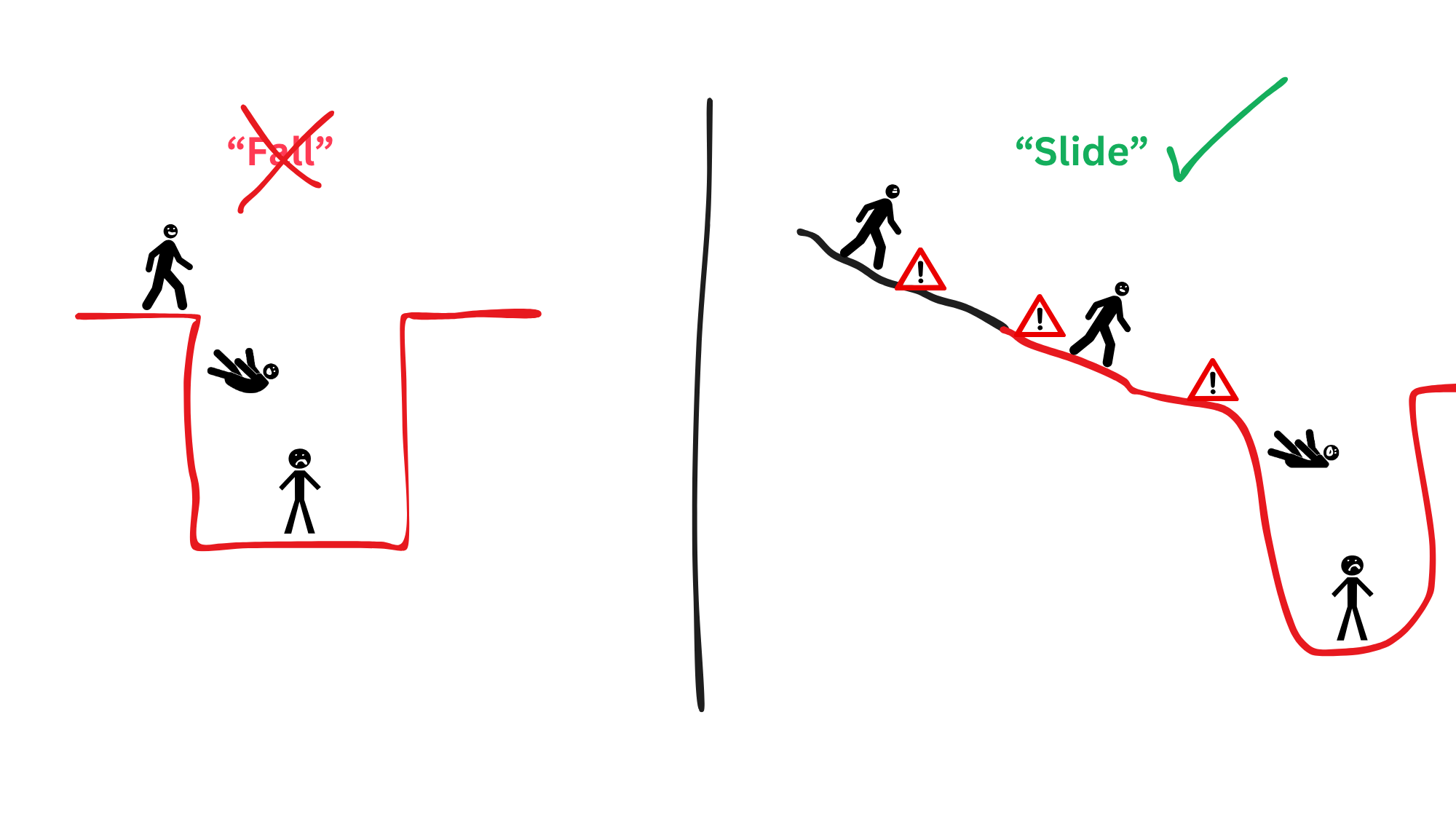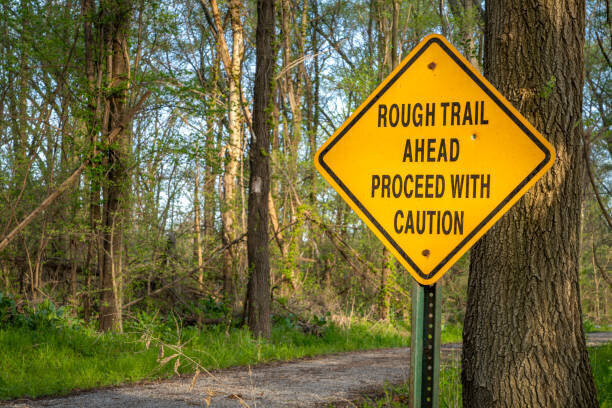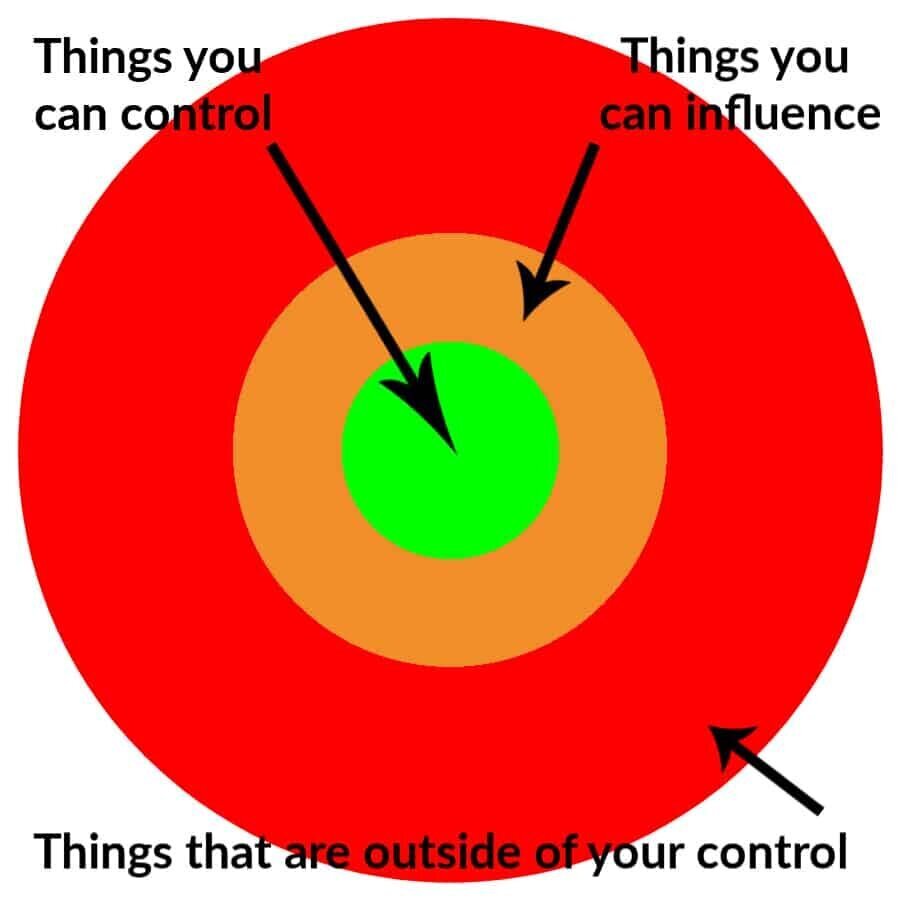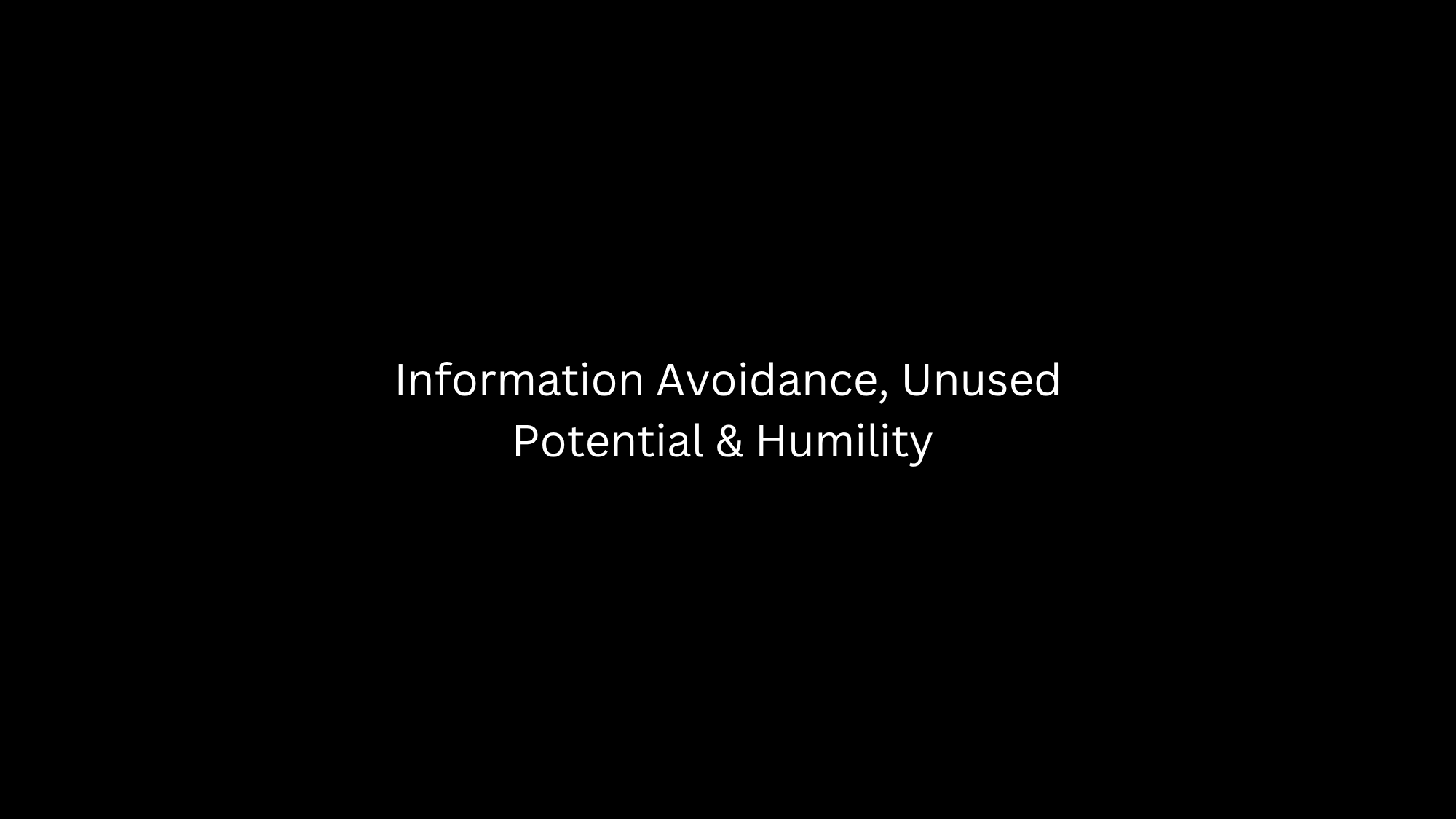

How to make the greatest comeback of your life...
You don’t fall into a rut overnight, you slide into one.

And that slide starts with the tiny slips in your energy, mood and habits that go unnoticed until it’s too late.
• One skipped workout.
• One late night.
• Three “I’ll do it tomorrow”s
• One “off day” that spirals into a 3:47 am cookie-and-zombie-scroll session.
:)
But by the time you realise what’s happening, gravity’s already done its job.
Why this matters…
If you can catch yourself on the slope, you’ll never have to climb out of the pit.
This skill of catching yourself is what I call Slope-Maxxing.
In short...
Escaping ruts isn’t about pushing harder; it’s about catching sooner.
Because micro-maintenance beats massive repair.
Every-time.
So here's the bottom line on how to Slope-Maxx (aka: get out of a rut and make the biggest comeback of your life):
You follow the R.U.T. Framework and respect the 4 laws.
1.) Recognise the slope.
You notice the early warning signs that you're slipping before they turn into habits.
The Law of Gravity - what goes unchecked goes downhill.
2.) Use your anchors.
You do the smallest possible version of the "right thing" to stop the slide.
The Law of Friction - small resistance early prevents big crashes later.
3.) Time your stops.
Once you've regained momentum, you rest before you’re empty so you can keep your rhythm.
The Law of Momentum - stop before empty to keep moving forward.
By following the R.U.T. framework you'll redefine what "progress" means for you.
Old definition = how high you climb.
New definition = shortening the gap between falling and returning.
The Law of Recovery - the goal isn’t to avoid slipping, it’s to recover faster.
Because you're going to slip.
This isn't a sign you're failing, it's a sign you're alive.
You can’t stop life’s slopes, but you can train awareness so you never hit bottom again.
Here's the 5 minute run down on how to do so...
1.) Recognise the slope.
The Law of Gravity - what goes unchecked goes downhill.
The bottom line…
To prevent a crash, you need to give your slope shape and visibility.
Here’s how…
Identify “warning signs” unique to you that highlight when you’re slipping.
Think of it like this:
Your “warning signs” are like rumble strips on a road.

Or signs you see hiking in the mountains that warn you of sharp cliffs or dangerous animals.

To find your warning signs, ask:
- What’s the first thing I stop/start doing when I start slipping?
Some examples:
- Skipping the gym.
- Staying up later.
- Isolating.
- Doomscrolling.
But these signals don’t shout, they whisper.
They're the quiet thoughts gently nudging you throughout the day:
- “I’ll do it later.”
- “I deserve a break.”
- “I’m just tired.”
- “Really?! More work?!”
Go deeper...
The philosopher Jennifer Windt calls these “the incessant whispers in our stream of consciousness”.
Ignore them and they'll start to scream and carve grooves in your habits.
Listen to them and you'll catch yourself before gravity takes over.
Here are 4 common “sounds” a whisper makes as you begin slipping:
1. Justifying skipping what keeps you stable: gym, diet, maintenance.
2. Losing structure: “I’ll do whatever tomorrow.” Without guardrails, you'll default to the easiest path.
3. Micro-dopamine swaps: scrolling instead of training, YouTube instead of sleep.
4. Emotional cues: a low mood, restlessness, feeling “off.”
Once you recognise your whispers, you'll know what trail awaits you up ahead and you'll stop slipping.
2 optional tools to help you recognise your warning signs:
- Keep a short “Discomfort Diary.” Each day note one moment you avoided discomfort: that’s a slope signal. Then make that activity you avoided a priority tomorrow.
- When the slope feels out of your control, draw a quick “Circle of Influence.” Write the problem you think is causing you to slide in the middle of a piece of paper, then draw 3 circles around it. In the outer circle write down everything related to the problem you can't control. In the second circle write down things you kinda control. In the smaller circle write down everything you can control. Accept everything in the big circles, focus all your energy on the inner circle.

Now you've recognised your warning signs, the next step is to...
2.) Use your anchors.
The Law of Friction - small resistance early prevents big crashes later.
The bottom line…
Once you’ve recognised the slope, you don’t need a full reset; just to re-stabilise.
Or if you’ve hit rock bottom, you don’t need to change everything overnight. You just need to admit where you're at and start climbing slowly.
Here’s how…
- Do the smallest possible version of the right thing.
When you notice yourself drifting, don’t overthink: act.
- A short walk.
- One set at the gym.
- Ten minutes of focused work.
- Even making your bed.
Why this matters...
You don’t climb because you feel ready; you feel ready because you climb.
In other words, you can’t think yourself back up the slope. You can only move your way up.
Action resets emotion faster than thinking ever will.
Here's how to find the "right thing" to do:
1.) Think of your 3 ingredients for a good day.
Write them on a flashcard and keep it visible.
Examples…
- Alex Hormozi's 3 ingredients for a good day = write something, train with friends, eat with friends.
- Mine = contribute to a project, train hard and eat well, have one face-to-face conversation.
With a clear blueprint, a “good day” becomes easier to achieve.
But if mixing any of those your 3 ingredients feels too overwhelming right now, resort to “if, then” plans:
• If I feel my energy dip, then I’ll take a 10-minute nap.
• If I start scrolling, then I’ll switch to a long-form podcast.
• If I’m avoiding tasks, then I’ll clean my room and list what needs doing.
Small acts of friction stop the slide before it becomes a fall.
Optional tool:
- Once a week, declare a “No Excuses Day.” For 24 hours, act on plans exactly as written, no bargaining. It strengthens your “act before overthinking” muscle.
Then once you regain momentum and start walking back up the slope, you’ll need to prevent future slips...
3.) Time your stops.
The Law of Momentum - stop before empty to keep moving forward.
Bottom line…
Discipline isn’t grind, it’s rhythm.
You don’t protect discipline by pushing harder. You protect it by knowing when to stop.
A cool example…
Ernest Hemmingway had one rule for writing; stop writing when it’s going well.
Why?
Stop while you have energy and you’ll want to return tomorrow.
What to do next…
Use non-negotiable rituals and maximums to keep from depleting yourself.
Examples:
- Set a maximum daily deep-work window (90 minutes) and never exceed.
- Cap workouts at a set number of exercises.
- Limit how many calls you take each day to protect your social battery.
Personally, I take a 10-minute nap everyday after the gym, even if I feel energised.
The bigger picture…
Our ancestors conserved energy to survive; to hunt, flee, fight.
Back then, rest made sense because energy waste could've been fatal.
The difference is; today survival isn’t the challenge, consistency is.
But we’re still wired to save energy and avoid effort that's connected to "pay offs" too distant in the future.
In other words: our biology hasn’t caught up to our modern environment.
As psychiatrist Neel Burton writes:
“Today, mere survival has fallen off the agenda, and it is long-term vision and commitment that lead to the best outcomes. Yet our instinct remains to conserve energy, making us averse to abstract projects with distant and uncertain payoffs.”
Simply put...
Laziness isn’t moral failure, it’s biology.
Discipline isn’t about doing more; it’s about doing less damage so you can keep moving.
As the psychoanalyst Anouchka Grose put it:
“You have to live, you have to act… and you also have to flop.”
Optional tools:
- To protect momentum, write a quick note to your Future Self. Tell him/her what you’re choosing not to do/to do today and why it matters tomorrow. Seeing future-you thank you keeps rhythm alive.
- Or make a Choice Map for your week. Draw branches for each decision and its ripple effects. It shows how stopping early today can multiply progress later.
Once you’ve got that momentum back...
- Stop when you’re strong.
- Rest before you’re wrecked.
That’s how you keep the rhythm and avoid sliding.
In summary…
- Recognise the slope.
- Use your anchors.
- Time your stops.
That’s how you break the R.U.T.
Catch yourself early.
Stabilise fast.
Protect your rhythm.
You don’t need to fight yourself, you just need to listen sooner.
That's all for this week.
Lew
P.s. you can join the waitlist for my first product here.
P.p.s tomorrows vid will be from this newsletter so some things will be explained in more detail.
P.p.p.s look at this huge mushroom i saw walking back from the gym.


tHURSDAY'S THERAPY
Join 10,000+ improving their mental health & social skills 1 Thursday newsletter at a time
Happy to have you here!
try refreshing the page and trying again!







.png)

.png)
%20final%20final.png)



.png)
.png)

